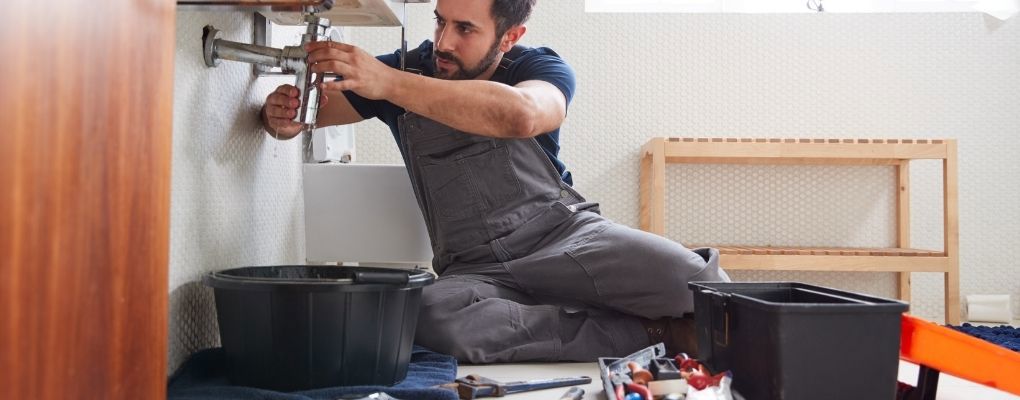Strategies for Handling Plumbing Issues in Rental Properties
Strategies for Handling Plumbing Issues in Rental Properties
Blog Article
We have discovered this post involving How to Handle Plumbing Issues in Your Rental Property listed below on the internet and believe it made sense to discuss it with you on this page.

Handling plumbing issues in rental buildings efficiently is crucial for maintaining occupant fulfillment and maintaining the residential property's value. Whether you're a property manager or a property manager, recognizing how to attend to these usual problems can conserve you money and time while ensuring compliance with lawful duties. Here's a step-by-step overview on how to deal with pipes issues in rental residential properties.
Document Whatever
Maintain detailed documents of all reported pipes issues and the actions taken to solve them. Documents must include dates, summaries of the issue, communication with occupants, and invoices from professionals or plumbing professionals. This information can be critical for insurance coverage cases, tax obligation reductions, and legal defense.
Use Qualified Professionals
Constantly make use of licensed and insured experts for considerable pipes repair work and setups. This ensures that the work depends on code and can assist prevent obligation problems in case of mishaps or further damage. It likewise assures renters that repair work are being handled professionally.
Establish Clear Communication
Motivate renters to report any type of plumbing issues as quickly as they take place. Supply several communication channels such as phone, e-mail, or an occupant site to make it very easy for them to connect. Trigger reactions to these reports can avoid small issues from intensifying into significant troubles.
Inform Lessees
Enlighten your occupants regarding what constitutes a pipes emergency and what does not. Provide standards on exactly how to deal with small problems themselves, such as using a bettor to unblock a toilet. Additionally, notify them about what they need to prevent putting down drains pipes to avoid clogs, such as oil, coffee grounds, and non-biodegradable things.
Routine Maintenance
Apply a routine upkeep routine for all pipes systems in your leasing homes. Regular checks can assist identify and solve problems like leakages, slow drains pipes, or corroded pipelines before they become severe. Consider working with a professional plumber to examine the properties every year or semi-annually.
Quick Response to Emergency Situations
Have a strategy in place for replying to plumbing emergency situations. This should include having the call information of trustworthy plumbing services that supply 24/7 emergency fixings. Quick action is important to decrease damage in circumstances like ruptured pipes or severe leakages.
Preventive Upgrades
Take into consideration upgrading older plumbing systems and components to extra modern, effective versions. This can reduce the frequency and intensity of pipes concerns and lower long-term maintenance prices. It's also a selling point for prospective lessees that value upgrades and modern features.
Occupant Move-Out Inspections
Conduct detailed pipes checks during move-out evaluations to make sure that any type of concerns are recognized and addressed before a new renter moves in. This avoids conflicts with brand-new lessees over pre-existing problems and ensures the home remains in top condition.
Understand Legal Obligations
Understand your legal obligations relating to plumbing and general home maintenance. Many jurisdictions require property owners to ensure their homes are habitable and that all plumbing systems are in good working order. Failure to address serious concerns without delay can bring about lawsuits from occupants.
Renter Reimbursements
If a plumbing concern calls for instant interest and the tenant resolves the concern by themselves, have a clear policy in place for compensating prices. Make sure renters know they ought to obtain previous authorization for higher-cost repair work unless it's an absolute emergency situation.
Final thought
Dealing with pipes concerns in rental residential properties needs a proactive strategy and great communication with lessees. By remaining on top of maintenance, reacting quickly to emergencies, and making use of competent specialists, proprietors can maintain their homes in outstanding problem and preserve good connections with tenants.
How to Handle Water Damage in a Rental Property
What is Water Damage?
Water damage is harm or destruction caused by water entering areas where it is not supposed to be. It can be caused by a variety of sources and can manifest in different ways. The most common examples of water damage include:
Leaking roof Plumbing leaks Appliance malfunctions Poor drainage Flooding Sewage backup Condensation Tenant negligence HVAC system issues Frozen pipes Is water damage dangerous?
Water damage itself is not inherently dangerous, but it can lead to various hazards and health risks if not promptly and properly addressed. The severity of these risks depends on the extent of the water damage, the source of the water, and how quickly it is mitigated.
Some potential dangers associated with water damage include structural damage, mold and bacterial growth, electrical hazards, water contamination, and pest infestations. In situations where mold and mildew have gone unaddressed, mold can start to develop within 24-48 hours of water exposure, and this can impose a serious health risk to tenants. In particular, mold spores and damp conditions can lead to respiratory issues and even make existing health problems worse, such as allergies, asthma, or immune disorders.
Water Damage in an Apartment - Who is Responsible?
If the water damage is caused by the tenant’s negligence, the tenant is responsible for the cost of repairs. If the water damage is caused by a defect in the property, the landlord is responsible for the cost of repairs. If the water damage is a result of natural causes, such as excessive rain, then the landlord is responsible, since the water intrusion likely occurred due to a defect in the property. Landlord Responsibility water damage in rental property
Since maintaining habitability is the landlord’s legal responsibility, landlords are responsible for any resulting structural damage caused by water damage. These structural damages may include damage to walls, roofs, ceilings, and flooring. If water damage has affected the rental property’s original structure, the landlord is responsible for repairing or replacing those materials. Therefore, landlords should have property insurance that covers the structural components of their rental property so that they can receive help with the costs of covered events.
Preventative measures can also help landlords avoid massive renovations. Preventative maintenance may include conducting regular inspections to identify and address potential water damage before it becomes a major and urgent problem.
If a landlord fails to meet their responsibilities regarding water damage, it can lead to legal disputes and potential liability. Tenants who believe their landlord is not addressing water damage issues in accordance with California law can seek legal advice or contact local housing authorities for assistance.
https://www.goodlifemgmt.com/blog/water-damage-in-a-rental-property/

Do you really like reading up on ? Post a review below. We will be delighted to hear your suggestions about this blog post. We are looking forward that you visit us again soon. Are you aware of somebody else who is sincerely interested in the subject? Do not hesitate to share it. Bless you for being here. Please pay a visit to our website back soon.
Report this page